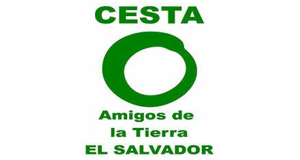Biointensive project: food alternative in the Central American Dry Corridor
A set of agroecological practices, technologies and principles for the production of healthy and diversified food in small spaces, which have helped achieve the food security of rural families in the Central American Dry Corridor.
Context of the story
The Central American Dry Corridor is an ecoregion that extends between southern Mexico and Panama, between the Pacific coast and 800 meters above sea level. Climate change causes more frequent periods of drought and increased temperatures. The climatic situation and bad practices and / or productive technologies have caused environmental deterioration, erosion, water deficit, low productivity, food insecurity and poverty.
The agroecological approach, with the implementation of the biointensive method, has allowed us to produce healthy and diverse foods, with the reduction of dependence on external inputs, rational and efficient use of water and environmental sustainability.
Biointensive cultivation for families of the Dry Corridor
The implemented initiative
The initiative was developed in 105 communities in Honduras, Nicaragua and El Salvador, with the financial support of FONTAGRO-IBD and executed by Amigos de la Tierra España, el Instituto de Promoción Humana, Somoto (INPRHU-Somoto), Universidad Nacional Agraria (UNA), Universidad Nacional Autónoma de Honduras (UNAH) y Asociación de Desarrollo Pespirense (ADEPES). The objective was to improve the availability of sufficient and healthy food, promoting innovative techniques of sustainable intensification through the biointensive cultivation method. The method was promoted, validated and disseminated among families, promoters, technicians, and students. Increased availability, productivity and diversification of healthy foods, soil conservation and restoration, training, research and scaling.
Biointensive orchard: a sustainable alternative
The technological solution
The biointensive cultivation method is a set of small-scale horticultural principles. It began to develop in California in the 1970s through Ecology Action, with processes of education and biointensive research which have allowed to develop and refine this form of production. The method consists of implementing adapted principles in the dry corridor such as: double digging, close sowing, transplanting and double transplanting, composting and application, use of open pollination seed, among others.
The result is an organic agriculture that not only produces nutritious and organic food, but also improves soil fertility, allowing producers to take advantage of land not considered suitable for agriculture. This method has allowed the training of producers through workshops, the establishment of biointensive orchards with drip irrigation systems, and the harvesting of water, ensuring the storage and exchange of native seeds..
With the biointensive method we are adapting to Climate Change by intervening in places with dry, stony soils, and without nutrients.
Participating countries
Results
34 training workshops on biointensive production and 206 replicas with beneficiaries have been developed. This allowed 953 producers (514 women) to establish biointensive orchards (493 with efficient irrigation), which total 2,120 terraces that occupy at least 10,000 m2, with a production of 76.5 tm / year of food, which will grow as a result of new areas, orchards, items, irrigation and water harvest.
The availability and diversification of healthy food for families was improved, in greater time and less space, with the establishment of biointensive orchards and irrigation systems, banks and seed exchanges and the implementation of good practices.

 Back to the project
Back to the project Nicaragua
Nicaragua Honduras
Honduras El Salvador
El Salvador







